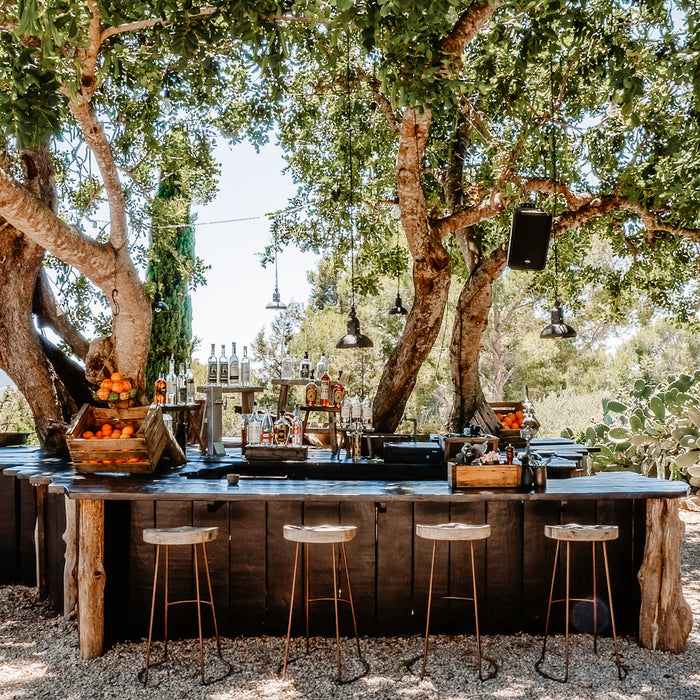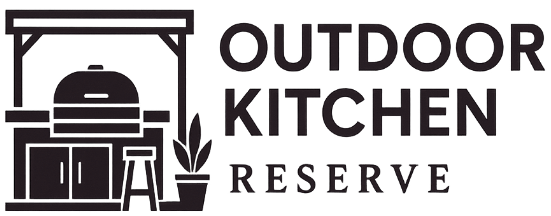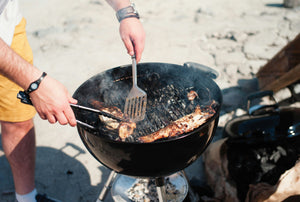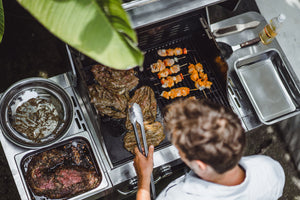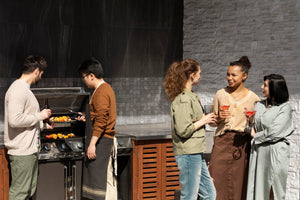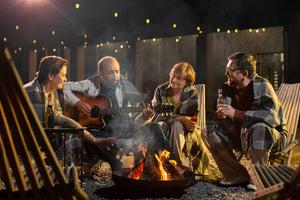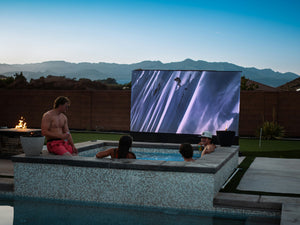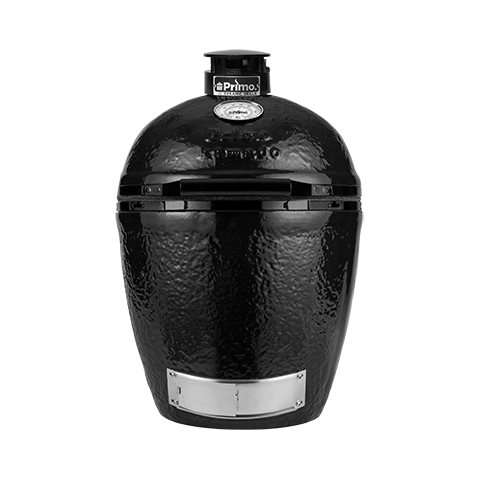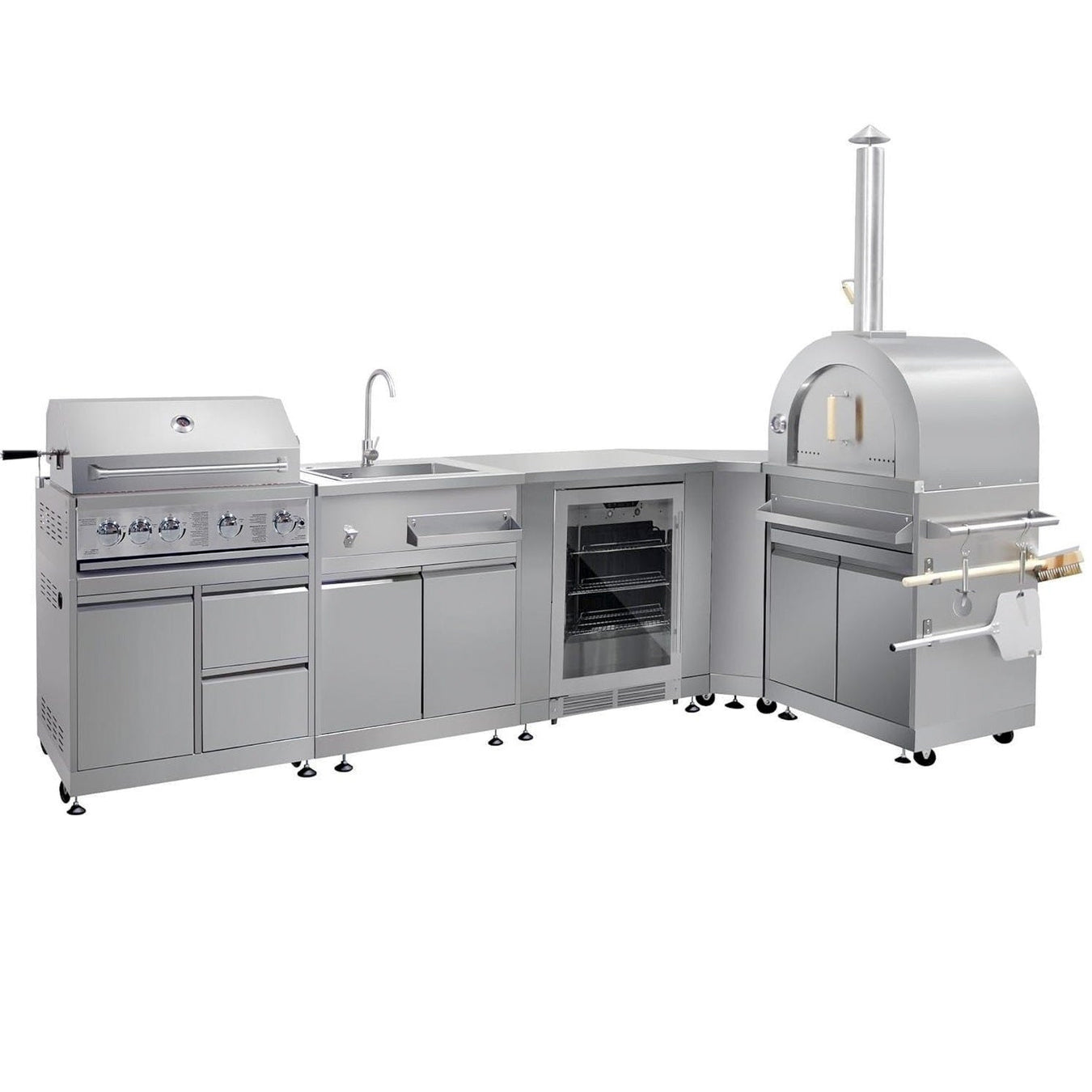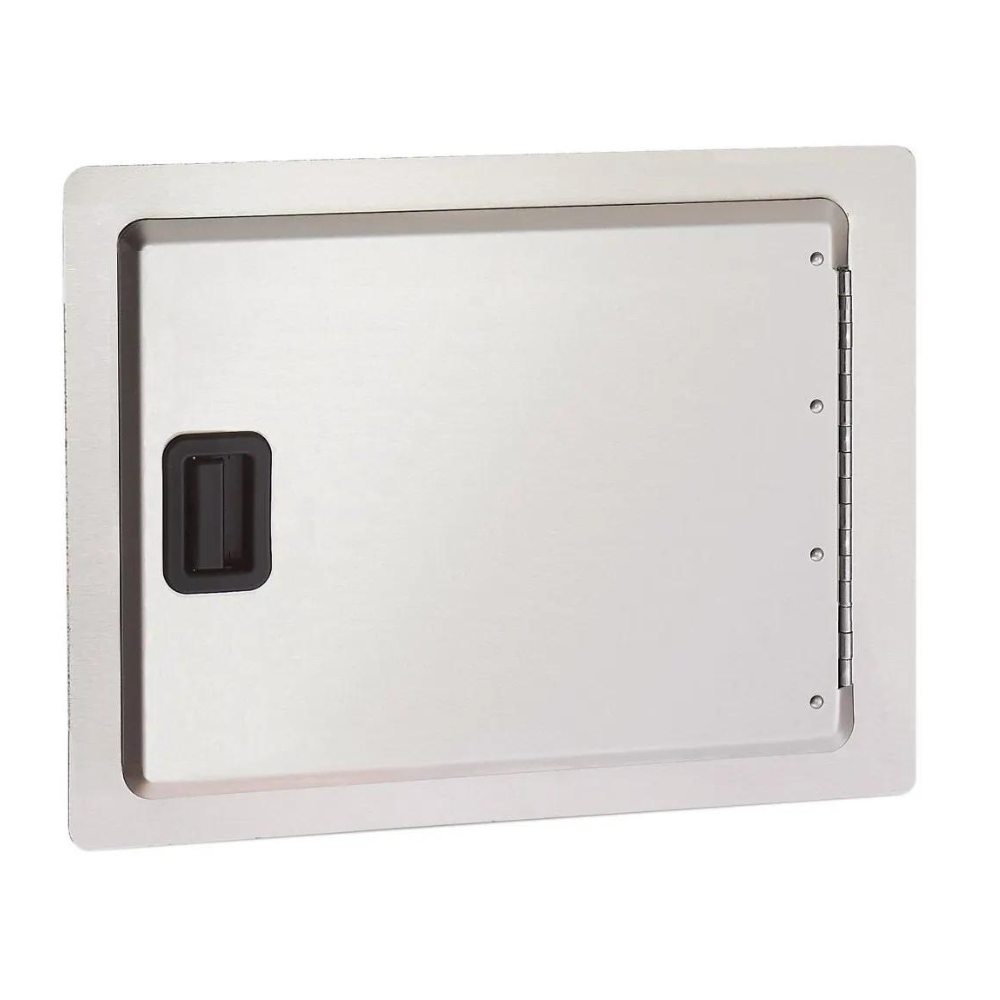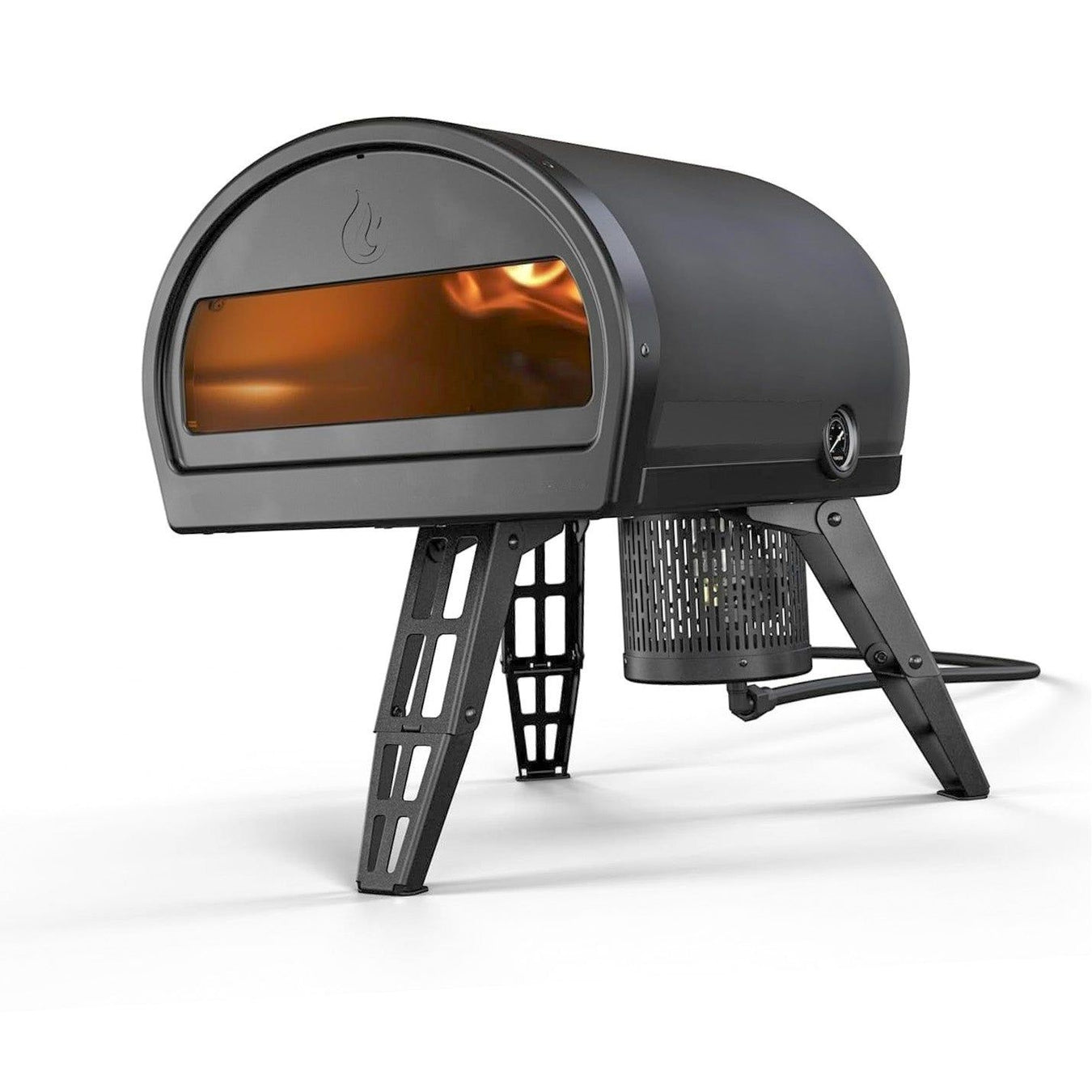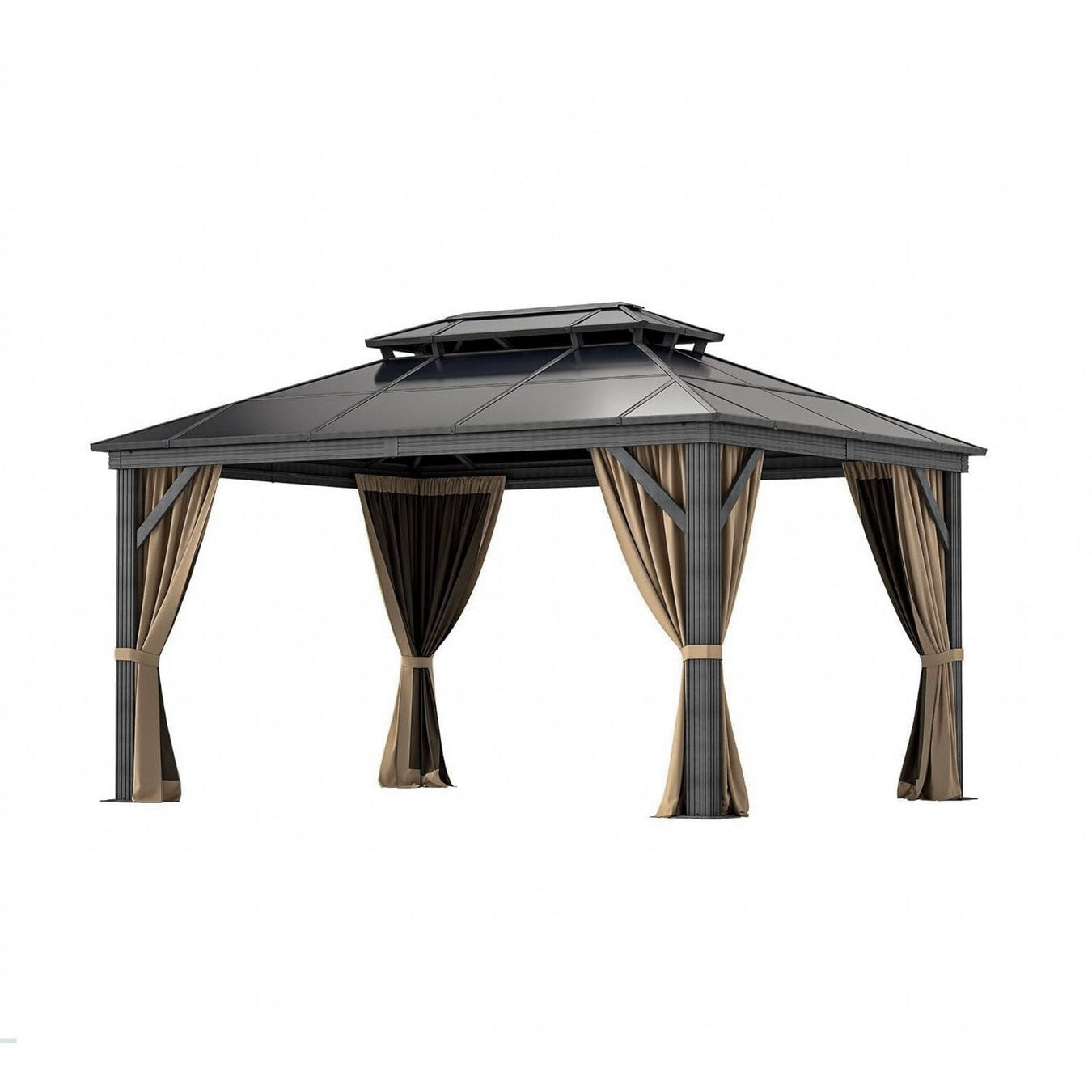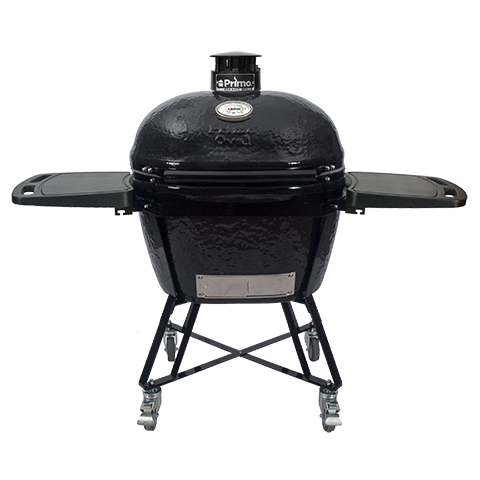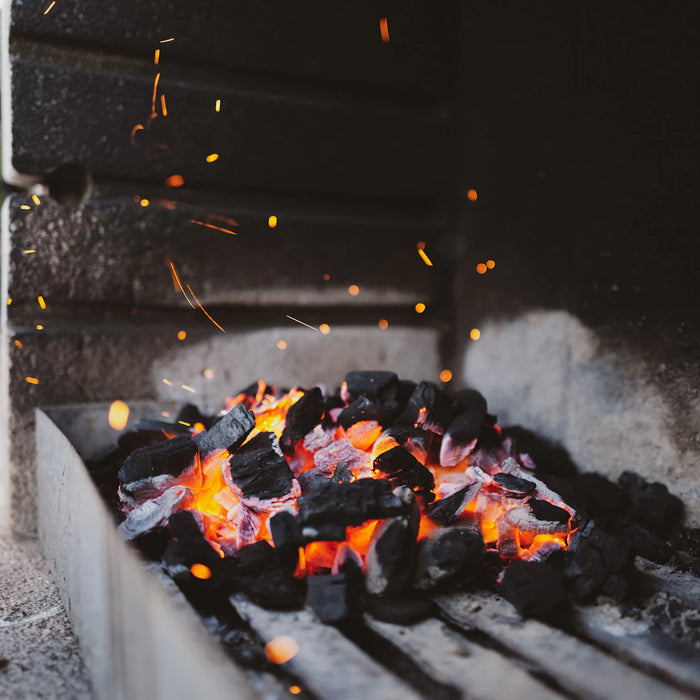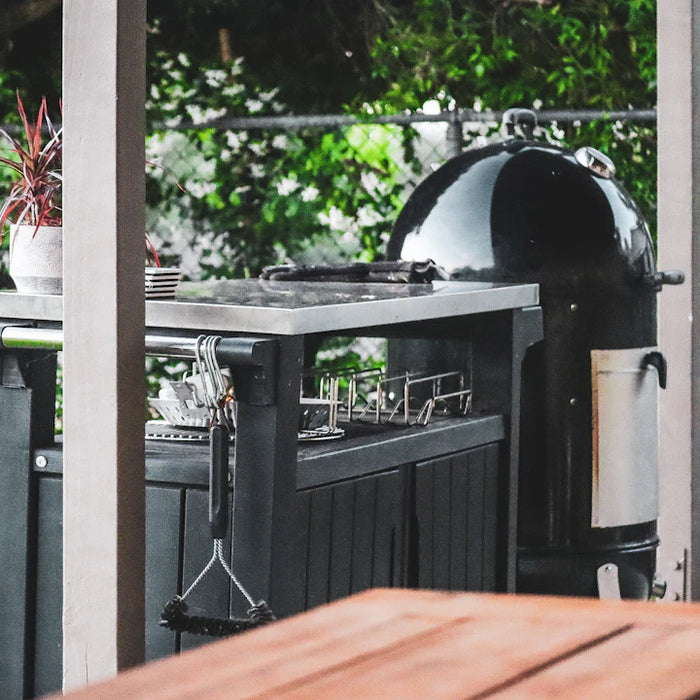Overview
Designing an outdoor kitchen enhances your backyard cooking and entertaining experience. Key factors include defining your cooking style, choosing the right location, incorporating essential features like grills and refrigeration, ensuring comfort with dining spaces, and adding technology and eco-friendly elements. Follow a structured design process to create your ideal outdoor cooking oasis.
Creating an outdoor kitchen is an exciting journey that can transform your backyard into a culinary paradise. With the right layout, you can enrich your outdoor cooking experience and elevate your outdoor living & garden space. Whether you are a grilling enthusiast, a fan of outdoor pizza ovens, or someone who enjoys entertaining friends around a fire pit, understanding how to design your outdoor kitchen layout is essential. In this blog post, we will delve into the key elements of designing an effective outdoor kitchen layout, ensuring you make the most out of your outdoor entertaining space.
Understanding the Basics of Outdoor Kitchen Design
Before diving into the specifics, it’s important to grasp the fundamentals of outdoor kitchen design. The layout of your outdoor kitchen not only determines the functionality of your cooking space but also influences its aesthetic appeal. Here are some essential factors to consider:
Define Your Cooking Style
Are you a casual griller or a gourmet chef? Your cooking style should dictate the design of your outdoor kitchen. If you love hosting get-togethers, consider incorporating a spacious BBQ grill island that can accommodate your needs. On the other hand, if you enjoy experimenting with different cuisines, including an outdoor griddle or a pizza oven is a fantastic idea. Understanding your preferences will be the foundation upon which you build your outdoor cooking oasis.
Choose the Right Location
Location is key when designing your outdoor kitchen. Ideally, it should be convenient and functional while also complementing the overall landscape of your outdoor living space. Consider the following when selecting the perfect spot:
-
Proximity to indoor kitchen: Keeping a short distance will simplify food preparation and serving.
-
Access to utilities: Ensure the site can accommodate necessary utilities such as water, gas, and electricity.
-
Protection from elements: Consider positioning your outdoor kitchen under a pergola or awning to shield it from rain or direct sunlight.
Key Features of an Outdoor Kitchen Layout
Once you’ve established your cooking style and location, it's time to think about which key elements will enhance your outdoor kitchen layout. Below are some essential features you might want to include:
Grills and BBQ Grill Islands
The focal point of any outdoor kitchen is often the grill. Whether you opt for a standalone grill or an integrated BBQ grill island, consider features such as size, BTU output, and fuel type. A grill island not only provides ample space to cook but also serves as a gathering spot for guests. Here are some things to keep in mind:
-
Materials: Choose weather-resistant materials that can withstand the outdoor elements aligned with your aesthetics.
-
Placement: Ensure it's positioned for easy access to prep, serving, and cleanup areas.
Incorporating Outdoor Refrigeration
Having outdoor refrigeration is an essential part of streamlining your outdoor cooking experience. Imagine having easy access to drinks, marinades, and ingredients without the hassle of running back inside. Look for solutions that can fit neatly into your kitchen layout:
-
Under-counter refrigerators: Utilize compact refrigerators for a clean finished look.
-
Outdoor beverage coolers: Perfect for keeping drinks ice-cold during gatherings.
Cooking Equipment Beyond the Grill
For the serious outdoor chef, it's vital to consider various cooking appliances. Incorporating outdoor griddles or outdoor pizza ovens can provide versatility in your cooking options. Here’s why they are useful:
-
Expand your culinary repertoire: With options to grill, griddle, or bake, you'll impress your guests with diverse dishes.
-
Compact designs: Many contemporary outdoor cooking appliances are designed to fit seamlessly into smaller spaces.
Comfort and Atmosphere in Your Layout
Designing your outdoor kitchen isn’t just about functionality; comfort and ambiance matter too. Keep these aspects in mind:
Dining and Entertainment Spaces
Include a dining area that complements your kitchen layout to encourage social interaction while you cook. Outdoor furniture plays a significant role here:
-
Choose durable materials: Look for materials that can withstand the weather while enhancing the aesthetic of your outdoor cooking space.
-
Flexible seating arrangements: Consider incorporating modular seating that can be easily rearranged to suit different occasions.
Lighting and Heating Options
Extend your outdoor cooking time into the night by adding adequate lighting. Outdoor heating, such as patio heaters or fire pits, also allows you to enjoy your space year-round:
-
Functional lighting: Integrate task lighting over your cooking areas and ambient lighting for the dining setup.
-
Cozy heat sources: Installing a fire pit can create a warm, inviting atmosphere for your guests.
Bringing Technology to Your Outdoor Experience
Integration of outdoor audio & video systems in your outdoor kitchen layout can significantly enhance your entertaining experience:
-
Sound systems: Ensure your outdoor space is equipped with speakers to enjoy music while you’re cooking.
-
Televisions: Optional installations for watching games or movies can make your outdoor gatherings more enjoyable.
Eco-Friendly Considerations
In today's world, infusing sustainability into your outdoor kitchen design is crucial. Solar power backup systems can provide energy for your outdoor kitchen, reducing reliance on traditional power sources. Here’s how:
-
Energy-efficient appliances: Choose appliances that consume less energy without compromising on performance.
-
Sustainable materials: Consider materials that are recyclable or sourced sustainably to minimize environmental impact.
The Design Process: Steps to Follow
Now that you have a clear understanding of the essential elements to incorporate into your outdoor kitchen layout, here’s a simple process to help you design the perfect space:
Step 1: Create a Sketch
Begin by sketching your outdoor kitchen layout. Start with the arrangement of major appliances, considering their proximity and flow for efficiency. Think about how each section of your kitchen will connect with others.
Step 2: Trial and Error
Feel free to rearrange during the planning process. What seems ideal on paper may not work as well in reality. Gather input from family and friends to ensure your design meets practical needs.
Step 3: Set a Budget
Estimate costs for appliances and finishes. Balancing quality with your budget is key to achieving an outdoor kitchen layout that looks great and functions seamlessly.
Step 4: Get Professional Help
If you’re feeling overwhelmed, consider consulting a landscape architect. They can assist you in realizing your vision while accounting for all necessary utilities and regulations.
Your Outdoor Cooking Oasis Awaits!
Designing your outdoor kitchen layout is a rewarding process that opens up endless possibilities for outdoor cooking and gathering. With thoughtful planning, adequate space for BBQ grill islands, outdoor refrigeration, and cozy atmospheres complemented by outdoor heaters and fire pits, your backyard can transform into a culinary haven! Remember, this is your outdoor living & garden — let your creativity shine as you create the perfect environment for cooking, entertaining, and enjoying the great outdoors.
